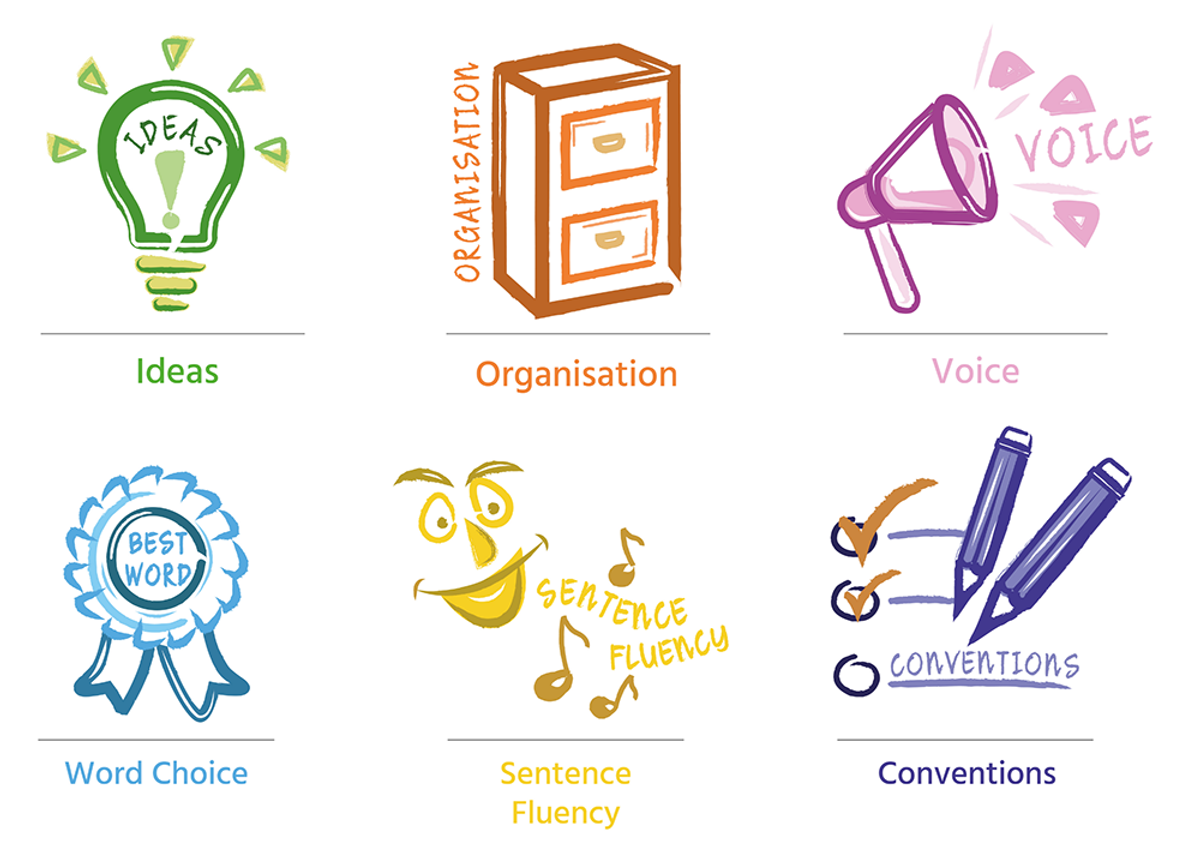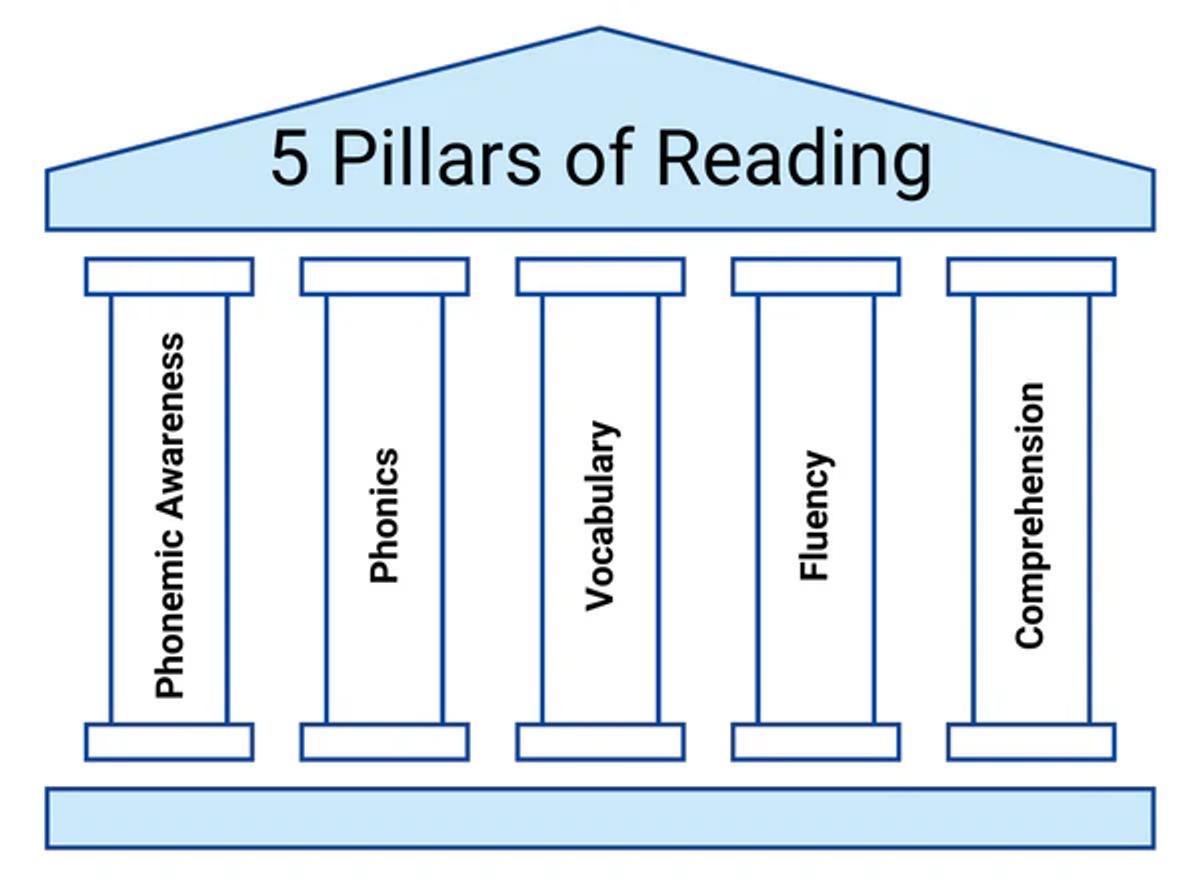Literacy

Understanding Skilled Reading and Writing: A Guide for Parents
As parents, receiving your child’s school report can be both exciting and overwhelming. You might have seen terms like 'fluency,' 'comprehension,' or 'grammar' in relation to your child’s reading and writing abilities. But what do these terms really mean? And how can you support your child’s growth in these areas? Let’s break it down by looking at the 5 Pillars of Reading and the 6 + 1 Traits of Writing. These are two essential frameworks used by educators to develop skilled readers and writers.
The 5 Pillars of Reading
Reading is a complex skill that develops over time, and it is based on five key components. When educators assess your child’s reading, they focus on the following:
- Phonemic Awareness: Phonemic awareness is the ability to hear, identify, and manipulate individual sounds (phonemes) in spoken words. This is a critical skill for early literacy, as it helps children understand the relationship between sounds and letters. It is essential for both reading and writing, as it forms the basis for decoding (reading) and encoding (spelling) words.
- Phonics: Phonics is the ability to connect the sounds of spoken English (phonemes) with the letters or groups of letters that represent those sounds (graphemes). It enables individuals to decode unfamiliar words by sounding them out, linking letters to their corresponding sounds. This skill is crucial for both reading and writing, as it helps in understanding the relationship between spoken and written language.
- Fluency: Fluency refers to how smoothly and accurately a child can read. A fluent reader is able to read with expression and without much hesitation, which helps them focus on understanding what they are reading. Fluency builds through practice and exposure to a wide range of texts.
- Vocabulary: Vocabulary refers to the words a child knows and understands. A strong vocabulary helps children read and comprehend more complex texts. The more words children encounter and learn, the easier it becomes for them to understand new ideas in reading.
- Comprehension: Comprehension is the ability to understand and interpret what has been read. Skilled readers are not only able to recognise words but also to make connections, infer meaning, and remember key details. Comprehension is essential for academic success across subjects.
The 6 + 1 Traits of Writing
Good writing isn’t just about putting words on a page—it’s about crafting clear, organised, and engaging communication. The 6 + 1 Traits of Writing is a framework used to assess and improve writing skills. Here’s a brief overview of each trait:
- Ideas: This trait focuses on the content of the writing—what the writer is trying to communicate. A child’s writing should have clear, focused ideas that are engaging to the reader. The ideas should be well developed with details and examples.
- Organisation: Organisation is the structure of the writing. A well-organised piece has a clear beginning, middle, and end. It should have paragraphs that are logically ordered, helping the reader follow the flow of ideas.
- Voice: Voice refers to the personality and tone of the writing. A child with a strong voice will make their writing feel lively and unique. Whether it’s a persuasive letter or a creative story, voice helps the writer express themselves clearly.
- Word Choice: Word choice is the use of rich, specific words to convey meaning. Good writers avoid vague or overused words and choose words that are precise, varied and interesting.
- Sentence Fluency: Sentence fluency is about how the sentences flow. Are they easy to read aloud? Do they vary in length and structure? Writing that flows well is engaging and helps readers connect the ideas.
- Conventions: Conventions include spelling, punctuation and grammar. While conventions are important, the focus here is on using these tools correctly to help the reader understand the writing without distractions.
- Presentation (the "Plus 1"): This final trait focuses on how the writing is physically presented. It includes handwriting, formatting and the overall neatness of the work. Good presentation makes writing more enjoyable and easier to read.
How You Can Support Your Child
Now that you understand the key components of reading and writing, what can you do at home to support your child? Here are some simple ways to help:
- For Reading: To support your child’s reading development, encourage daily reading, whether it’s books, comics, magazines, or even signs around the house. The key to improving decoding and fluency is regular practice, and reading aloud has been found to lead to more significant progress. So, make time to listen to your child read as often as possible, no matter their age. Also, read to your child for as long as they will let you or enjoy audiobooks together so they can hear fluent and expressive reading. After reading, talk with your child about the text to help build their comprehension. Ask questions, share opinions, and explore new words together. Engaging in rich conversations about what they’ve read helps deepen understanding and supports vocabulary growth. Encourage them to read a wide range of fiction and non-fiction texts, as this builds background knowledge and introduces them to different topics and language styles. The knowledge and vocabulary a child brings to a text has a powerful impact on how well they understand what they read. By making reading enjoyable, social, and varied, you’re laying the foundation for strong, confident readers.
- For Writing: To help your child develop strong writing skills, start by establishing a consistent home learning routine. Encourage them to complete spelling tasks using neat handwriting and help them sound out unfamiliar words, pointing out common spelling patterns or rules. Encourage your child to write for different purposes, such as short stories, letters, or journal entries, to build versatility in their writing. Remember that oral communication is the foundation of good writing, so encourage your child to express their ideas clearly and sequentially through conversation. Be a model for correct grammar and vocabulary usage—correct any mistakes gently and have them repeat sentences with proper grammar. Using a rich and varied vocabulary when you speak will also help expand their word choices, allowing them to express themselves more clearly in writing.
Skilled reading and writing are developed over time with practice and support. Understanding the 5 Pillars of Reading and the 6 + 1 Traits of Writing can help you focus on areas where your child may need more attention, as well as celebrate their progress.
By working together with your child, you’ll help them build strong reading and writing skills that will serve them well in school and beyond.
Rachel Gray
Literacy Leader


